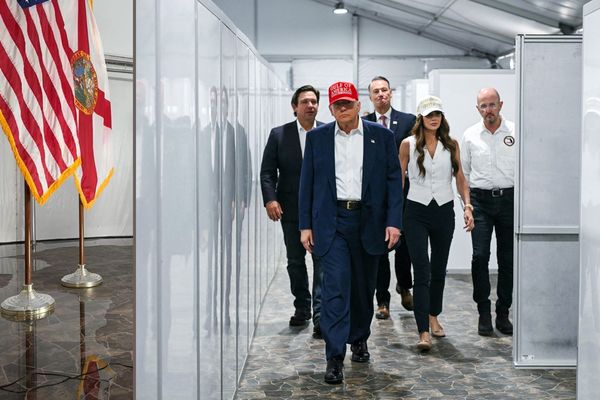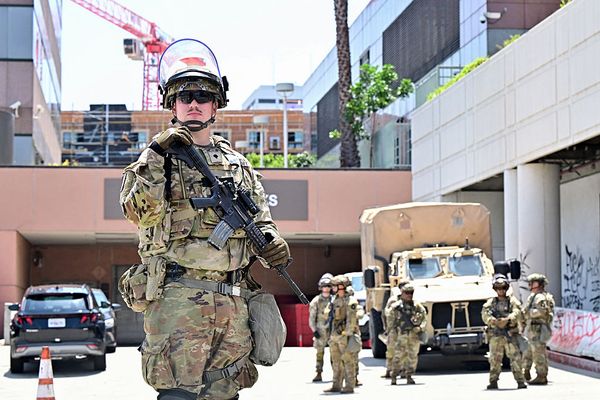
Kayasand wants to prove it can produce concrete-grade sand from recycled building materials and quarry aggregate.
A Hamilton business hoping to reduce the construction industry’s reliance on sand mining has secured investment towards proving its technology locally from the Government’s sustainable investment fund.
Kayasand holds the New Zealand licence for Japanese sand manufacturing technology that the company says can allow for premium quality concrete to be made with crusher dust, a by-product of quarrying.
It also wants to prove that recycled concrete and glass could be used in concrete production and says initial results have been very promising.
READ MORE: * Sand dredging: What’s yours is mined * Budget 2023: Climate fund slashed by $800m * Green money: NZ Govt backs climate with financing
The business has secured a $3.5 million investment from New Zealand Green Investment Finance in exchange for just under 20 percent of the company.
NZGIF was established by central government in 2019 to accelerate investment in technology to reduce greenhouse gas emissions. It received a $300m funding boost in last week's Budget.
Kayasand also received investments totalling $1.8m from notable purpose investors such as Sir Stephen Tindall’s K1W1, Icehouse Ventures, and Flying Kiwi Angels.
Kayasand chief executive Dr Bram Smith said the business had a good opportunity ahead of it as the construction industry embarks on a big push towards adopting sustainable building practices and lowering its emissions profile.
There are more than 300 plants using the same technology around the world, but Smith said each country wanted to see it working in its own environment and each quarry wanted to see whether it could process its aggregate.
It has an operational plant in Australia that it is letting potential New Zealand customers send small samples for processing.
Sand mining
Though some manufactured sand has typically been used in New Zealand concrete, because of quality problems sand dredging or mining, as is carried out north of Auckland at Pakiri Beach, has been the main source.
Sand is the most consumed resource in the world after water.
Sand mining has made headlines recently as environmentalists and locals opposed new resource consents being sought by McCallum Bros to dredge up to nine million cubic metres of sand off the coast off Pakiri.
Kayasand put in a submission to all three Auckland Council sand mining resource consents, and in December Smith told Newsroom it was critical the council “doesn’t just roll over and approve dredging the coast for another 35 years”, but that it look in detail at the options around manufactured sand and send a clear message that dredging is unsustainable.
The availability of cheap Pakiri sand does pose a problem to Kayasand, as it detailed in one of its submissions on the topic.
“Justifying investment in new concrete sand manufacturing processes is more difficult when dredged natural sand is readily available and the status quo is working,” the submission said.
Traditionally manufactured sand has been of too low a quality to be used in high proportion and was used in conjunction with natural sand.
“It's not like this is a new material that we've got coming through, we're basically just doing a better job of processing the material that's already there and it's already been used in concrete.
“We make a lot better quality manufactured sand so we can replace most if not all of the natural sand and concrete.”
Concrete innovation
He said there was a lot of demand for sustainable concrete coming from developers and the big brands were all making changes to stay competitive. For example, Holcim is bringing in new cementitious materials and Stevenson is injecting captured Co2 into its products.
Globally 8 percent of total emissions are produced through cement production (cement being the binding agent made out of limestone and clay used in concrete).
The amount of cement used per tonne of concrete can vary widely on the aggregate used as the base. Smith said the manufactured sand the company produces can reduce the amount of cement needed in the concrete blend.
“If we can reduce the amount of cement used in concrete by 20 percent that’s actually really meaningful from an emissions standpoint."
As far as the affordability comparison goes, Smith said it was difficult to get accurate costings for beach sand, but he said quarry side it was the same price, if not cheaper, to adopt its process than continue with the status quo for crusher dust.
The traditional manufactured sand process is also water intensive, with that water then needing to be stored or cleaned in order to be released.
Ultimately Smith said concrete was a problem that needed to be solved because it was a long-lasting, fire and water-resistant material – and that longevity meant any carbon embodied during construction could, in theory, be amortised over a longer period.
“It really is worth putting the effort into making concrete into a really sustainable product.”







